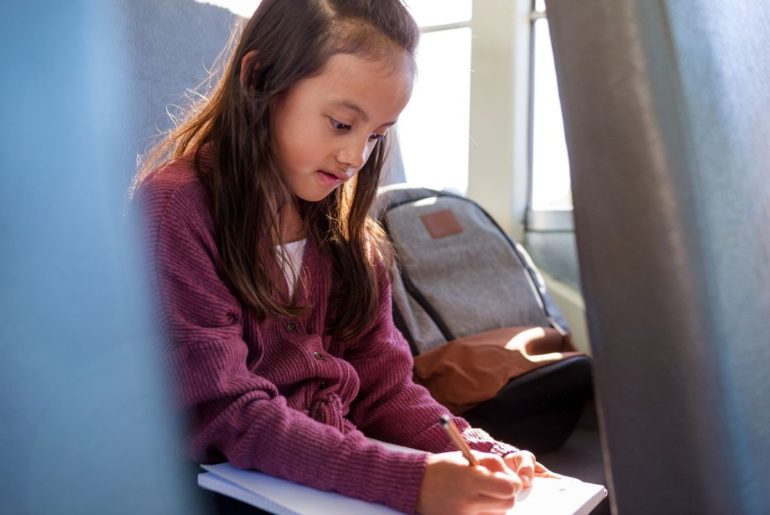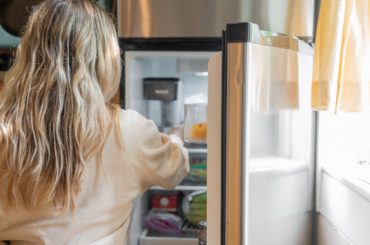Against the backdrop of the COVID-19 pandemic—the first known cases of which were located in Wuhan, China—the frequency and severity of racist harrasment and physical attacks against Asian Americans and Pacific Islanders (AAPI) in the U.S. have steadily risen in the past year, and even more sharply in recent months. Accounts of anti-AAPI violence have been surfacing all across the country, prompting calls for awareness and justice from anti-racist organizations and advocates for the AAPI community.
While racism against Asians is nothing new, former president Trump’s usage of terms like “the China virus” and “Kung Flu” set the stage for widespread xenophobia and racism aimed at Asians. Many of his followers adopted this rhetoric and took the former president’s example as permission to behave in biased ways. Now that many schools are starting to return to in-person learning as the vaccine becomes more widely available, many Asian American parents are concerned that their children may face bullying and harassment in the classroom.
There are several steps that families can take to combat anti-AAPI racism in their own schools and communities, and educating kids (and ourselves) is the first step. No matter your family’s race or ethnicity, these suggestions will help you create welcoming spaces for all kids, and help your children recognize the value of empathy and critical thinking in their daily lives.
Give them context
Start by explaining xenophobia to your child. It’s the hatred or fear of people we perceive to be foreign. Historically, in times of unrest or war, xenophobia tends to rise within groups that feel threatened.
In this case, the fear of the coronavirus, combined with two centuries of racist and harmful attitudes about the AAPI community (including atrocities such as the Chinese Exclusion Act in the 1800s, internment of Japanese Americans in the 1940s, and the brutal race-based killing of Vincent Chin in 1982) have fueled the latest wave of hate crimes against Asian Americans.
The more you and your child research and understand the historical roots of anti-Asian racism in the United States, the more confidence they will have to speak out against racism when they see it in real life.
Use critical thinking
Disinformation has run rampant on social media in recent years. Being able to determine the validity of the content in your feed is vital to making informed decisions and value judgments about what you’re seeing.
Disinformation has been extremely harmful for the AAPI community since the beginning of the pandemic. Social media has been a source of quick-spreading false rumors about the origins of the virus in China and how it spread, which has led to even more xenophobia among people who read and share that material.
If your child uses any social media, they should learn how to spot disinfo in their feed. When they read an article or social media post, have them ask the following questions:
- Who shared this? Profiles that have seemingly randomized usernames, stock images as profile photos, or that post at all hours of the day and night could be bots specifically created to spread disinformation on social media.
- Does anyone agree? Take a few extra seconds to do a quick Google search when you see a new story in your feed. Are other, reputable sites reporting this? Are there any published studies to back up their claims?
- Does the oversimplification of a problem seem too good to be true? It probably is. Bold claims and quick fixes for complicated problems are often rooted in disinformation. Try a reverse image search of any images in the post—disinformation often uses old photos to push a misleading narrative.
Words matter
Never use terms like “Chinese flu” or “Wuhan virus” when referring to the coronavirus pandemic, and correct your child if you hear them use these terms. The World Health Organization has urged against naming infectious diseases after groups of people or geographic regions because of the harm this can cause to those communities.
Using these offensive terms can unfairly place the blame of the coronavirus outbreak on Chinese people, and creates unnecessary divisions between communities. Parents should avoid using terminology and expressions that convey a sentiment of “us versus them,” which is a huge contributor to the attitudes that perpetuate racist behavior.
Check yourself
As much as parents try to model the behavior they want to see in their children, it’s not always easy to see if you’re making a mistake that they could pick up. Racist stereotypes of Asian characters still work their way into film & television, representation continues to suffer in the media, and the history of AAPI oppression in the U.S. has been largely erased or whitewashed in schools. Anti-Asian racism is a part of our history and culture, and needs to be acknowledged in order to be managed and extinguished.
Parents can push back against these problems by actively calling out racism, stereotypes, or xenophobia when they see it and modelling that anti-racist behavior for their families. For example, if you see an offensively portrayed Asian character in a movie you’re watching with your kid, call it out! Tell them exactly why it’s problematic and think together about how they could have chosen to portray that character more respectfully.
You may also be surprised to discover that you haven’t learned much about Asian and Asian Americans yourself—which is not uncommon given that AAPI history often earns barely a mention in most textbooks and classrooms. Understanding the struggles and complex history these communities have experienced gives context for others to witness and learn about current examples of anti-Asian violence. Consider this an opportunity to learn alongside your own kids, and add what you learn to the fabric of peoples histories in the United States.
This self-awareness will not only rub off on your kids, but it will become a great habit for you to practice in your own personal anti-racism work. The more you look out for these harmful cultural messages about the AAPI community, the more easily you will be able to avoid making these same mistakes in your own life.
Supporting AAPI kids and families
The most important thing you can do to support AAPI kids and families in your community right now is to acknowledge they are hurting. Living with the constant stress of escalating animosity towards one’s cultural group is nothing short of traumatic, and kids who are experiencing this right now should be given the time and space to cope and grieve, without being singled out.
When kids feel seen and heard, they can gain the confidence to stand up for themselves and others. Building opportunities to share personal experiences and emotions into your interactions with AAPI kids can help them express and process their feelings.
Kids understand and absorb so much more than we often realize, so it’s important to be conscientious about treating them and others respectfully at all times. Provide lots of opportunities for kids to ask hard, maybe even uncomfortable questions. Share your own feelings with them about what’s going on. Keeping communication open and honest is so important for fostering empathy and understanding for others.







